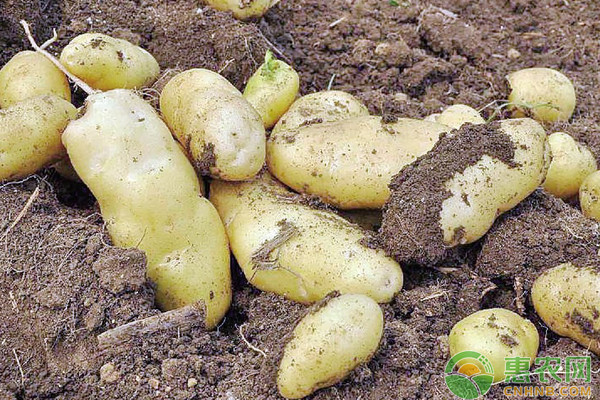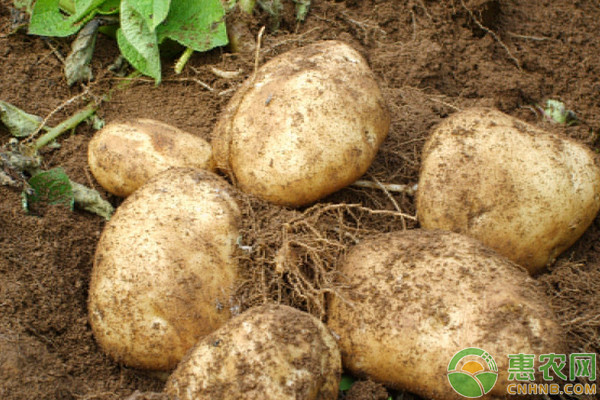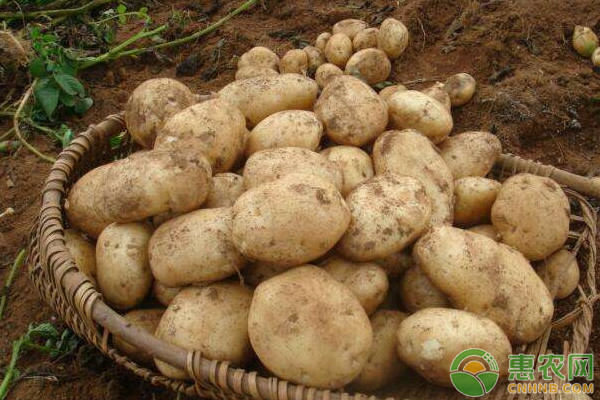Nan'an City is in Fujian Province of China, and the potato is the main food crop in Nan'an City, Fujian Province. Nan'an City introduced the new potato variety Feirui from 2015. In order to speed up the promotion of new high-yield potato varieties in Nan'an, we will further improve the quality of crops, the coverage of good varieties, and the quality grade. The Fiorentina demonstration planting performance and high-yield cultivation techniques are summarized below.

1 main traits
The leaves are light green, the stems are green, the potato is long elliptical, the skin is yellowish, the meat is bright yellow, the epidermis is smooth, the tubers are large and tidy, the buds are few and shallow, the sweet potato is concentrated, and the plant height is 37.2 cm. The number of tubers per plant was 5.7, the weight of single potato was 0.482 kg, the rate of commercial potato was 86.6%, the growth rate was 0.03%, the potato was not cracked, the hollow was 0.36%, the dry matter content of tubers was 18.21%, and the edible quality was good.
2 High-yield cultivation techniques
2.1 Selection of good seeds, timely sowing, reasonable close planting
In order to ensure the quality of seed potatoes, it is necessary to remove frozen, rotten, sick, and wilted tubers, and choose potato chips that are neatly tidy, free from pests and diseases, free from frost damage, smooth in the skin, fresh and moderately sized. Generally, potato chips of 50 to 100 g size are preferred. Timely sowing is an important part of achieving high yield. Due to the low sea level in Nan'an, it should be planted from late November to mid-December. Sowing should consider that the seedling period is not harmful to freezing. The planting density should be determined according to the characteristics of each variety. The varieties with earlier maturity, shorter plants and less branches should be suitable for close planting. Fei Wuri is moderately mature, with about 4,500 holes per 667m2, planted in double rows, with a hole spacing of 32-35 cm.

2.2 Selected plots, fine soil preparation, sorghum cultivation Choose sandy soil with loose soil and good drainage, and most avoid the board. At the same time, it is also necessary to avoid the field of continuous or mixed cultivation of tomato, pepper, eggplant and other Solanaceae crops. It is best to choose the field of rice and root vegetables. After the harvest, the soil is crushed by the rotary tiller, and then the belt is 105-115 cm, the ridge height is 30-36 cm, the ridge width is 70-80 cm, and the width between the two ridges is 20- The 25 cm specification is ridged and tidy, and then the taro is finely tidyed to make it fine and tidy.
2.3 germination before sowing, whole potato sowing
Autumn hybrid potato and long-term dormant varieties, in order to break the tuber dormancy, need to be germinated before sowing. The germination before sowing is generally carried out by using a medicament (or spray) about 20 days before sowing. The seed potato is soaked in 10 mg·kg -1 of gibberellin for 15 min, then placed in the wet sand to germination, and the germination process keeps the surface sand moist. However, to prevent the accumulation of water at the bottom, the cut seed potatoes will be washed away with the cleaned well water or cold water immediately after cutting. When the buds on the tuber are 1 to 2 cm long and the bud base has a white root point, Can be sown.
2.4 mulching cultivation combined with herbicide
The film cultivation technology can increase the yield by 20% to 25% while keeping heat, moisturizing and weed control, increase the commodity rate, increase the morning market and increase the output value. After sowing, use 45 mL (3 packs) of Hess (90% acetochlor) per 667 m 2 , apply 60 kg of water, spray evenly on the surface, and then cover the film. Generally, the amount of film is 7.5 kg per 667 m2, and the amount of ultra-thin film is 4 kg.
2.5 Scientific fertilization, strengthen water pipes
The base fertilizer is applied with 280 kg of organic fertilizer per 667 m2 (N:P:K≥4%, organic matter≥32%), compound fertilizer 72 kg (N:P:K is 14:16:15), urea 14 kg (N≥46.4%) ), potassium chloride 10 kg (K 2 0 ≥ 60%). After ploughing and smashing after ploughing, all the scuttles are used as base fertilizer before digging the trench. When the seedlings were excavated 80% to 90%, the quick-acting seedling fertilizer was applied once, and 25 kg of ammonium bicarbonate plus 25 kg of superphosphate and 1 400 kg of water were applied per 667 m2. In the bud stage, the potato fertilizer is applied once, and 15 kg of ternary compound fertilizer is applied around the plant. The fertilizer can not touch the leaves and directly contact the roots to prevent injury. At the same time, do a good job in the daily management of the field, you need to do the following three aspects.
1) Cultivate the soil. After emergence, check the seedlings and make up the seedlings. After the seedlings, carry out 1 cultivating; after 10 to 15 days, carry out shallow cultivating; in the flowering stage, combine the gully to carry out 1 large cultivating soil.
2) Strengthen water management. Moisture management is mainly to keep the soil moist during the seedling period; the water needs to be large during the flowering period of the bud. If it is drought, it is necessary to spray or water the horse water in time. It is strictly forbidden to use flood irrigation; when it enters the rainy season, it should pay attention to drainage and prevent waterlogging.
3) Control the length of the apprentice. In the flowering period of the bud, for the field with a long trend, 667 m 2 is sprayed with 15% paclobutrazol 20-25 g, and water is sprayed with 40-50 kg to control the length.

2.6 timely prevention of pests and diseases
The pests of potato seedlings mainly include ground tigers and aphids, which are sprayed with 10,000 m 2 of 50% phoxim emulsifiable concentrate per 667 m 2 or 150 g of trichlorfon. The mites can be treated with dichlorvos 150 g and water 60 kg spray. In the middle and late stages of potato, there is mainly late blight, and the best control agent is Phytophthora. When the central disease plant is found in the middle and late stages of production, it is necessary to spray 25% of the WP of 800 times, and spray it every 7 days. Once, even spray 3 times.
2.7 timely harvest
The harvest should be selected on a sunny day, placed in a dark and ventilated place after harvesting, and spread out to prevent aging of the buds and increase the rate of commodities.
The above is the demonstration planting performance and high-yield cultivation techniques of Feifului in Nanping City. Potato growers interested in this variety can learn more!
Pain Relief Patch for Breast
[Name] Medical Cold Patch
[Package Dimension] 10 round pieces
The pain relief patch is composed of three layers, namely, backing lining, middle gel and protective film. It is free from pharmacological, immunological or metabolic ingredients.
[Scope of Application] For cold physiotherapy, closed soft tissue only.
[Indications]
The patches give fast acting pain relief for breast hyperplasia, breast fibroids, mastitis, breast agglomera tion, swollen pain.
[How To Use a Patch]
Please follow the Schematic Diagram. One piece, one time.
The curing effect of each piece can last for 6-8 hours.
[Attention]
Do not apply the patch on the problematic skin, such as wounds, eczema, dermatitis,or in the eyes. People allergic to herbs and the pregnant are advised not to use the medication. If swelling or irritation occurs, please stop using and if any of these effects persist or worsen.notify your doctor or pharmacist promptly. Children using the patch must be supervised by adults.
[Storage Conditions]
Store below 30c in a dry place away from heat and direct sunlight.
Pain Relief Patch For Breast,Pain Relief Plaster For Breast,Relief For Breast Pain,Pad Relief Patch For Breast
Shandong XiJieYiTong International Trade Co.,Ltd. , https://www.xjytmedical.com